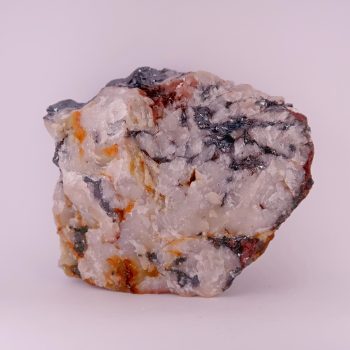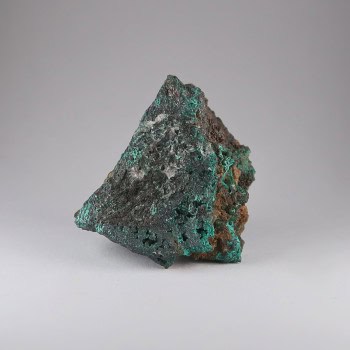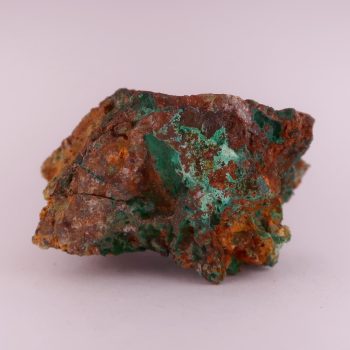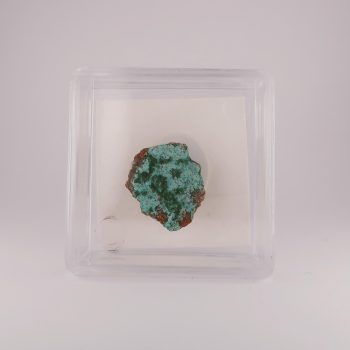Pseudomalachite
Pseudomalachite is a striking green copper phosphate mineral that resembles malachite but lacks its distinctive banding.
It was named after the greek words for ‘false’ and ‘malachite’, due to the similarity between the minerals in appearance.
Showing all 5 results
-

Hematite and Pseudomalachite from Bampfylde Mine, Devon
£30.00 -

Pseudomalachite from La Virgen Mine, Spain
Price range: £8.00 through £20.00 -

Pseudomalachite from Penberthy Croft Mine, Cornwall
Price range: £5.00 through £7.50 -
Updated

Pseudomalachite from Silberbrünnle Mine, Germany
Price range: £3.00 through £4.00 -

Psuedomalachite and Chrysocolla from Desire Mine, South Africa
£10.00
Information about Pseudomalachite
Pseudomalachite is a striking green copper phosphate mineral that resembles malachite but lacks its distinctive banding.
It typically forms in botryoidal (grape-like) or massive habits, though it can also appear as fibrous or crust-like aggregates. The mineral has a vitreous to silky luster and can range from deep forest green to bluish-green.
A secondary mineral in the oxidised zone of hydrothermal copper deposits. Often associated with libethenite, malachite, cornetite, chrysocolla and quartz.
Uses and History
Pseudomalachite is primarily valued as a collector’s mineral due to its vibrant color and unique appearance. Historically, it has been used as a minor ore of copper, though it is not a major source of the metal today.
The mineral was first described in 1813 and named “pseudomalachite” because of its strong visual similarity to malachite. However, its chemical composition is distinct, as it is a copper phosphate rather than a copper carbonate.
It is found in the oxidised zones of copper ore deposits, often alongside malachite, azurite, and other secondary copper minerals. Significant deposits have been discovered in Germany, the United States, Namibia, and the Democratic Republic of the Congo.
Mineralogy
Dark green, green, black-green, blue-green.
Hazards and Warnings
Contains copper – safe to handle, but dust should be avoided where possible.
Mineral collectors should wash their hands after handling specimens, to avoid any exposure to potential toxins.
Almost all rocks, minerals (and, frankly, almost all other substances on earth) can produce toxic dust when cutting, which can cause serious respiratory conditions including silicosis.
When cutting or polishing rocks, minerals, shells, etc, all work should be done wet to minimise the dust, and a suitable respirator or extraction system should be used.
Translations
Arabic:
Hindi:
Portuguese:
- Pseudomalaquite
Bengali:
Indonesian:
Punjabi:
English:
- pseudomalachite
Italian:
Russian:
- Псевдомалахит
French:
Japanese:
- 擬マラカイト
Spanish:
- Pseudomalachit
German:
- Pseudomalachit
Korean:
Thai:
Gujurati:
Mandarin Chinese:
Urdu:
